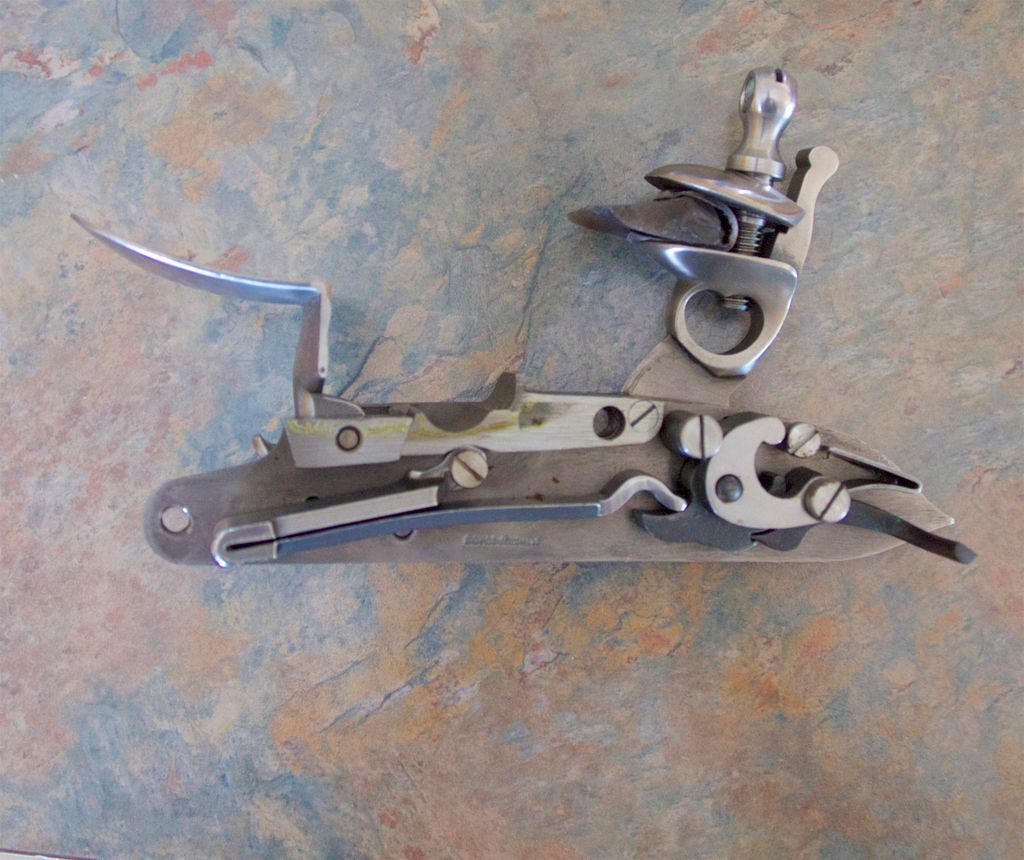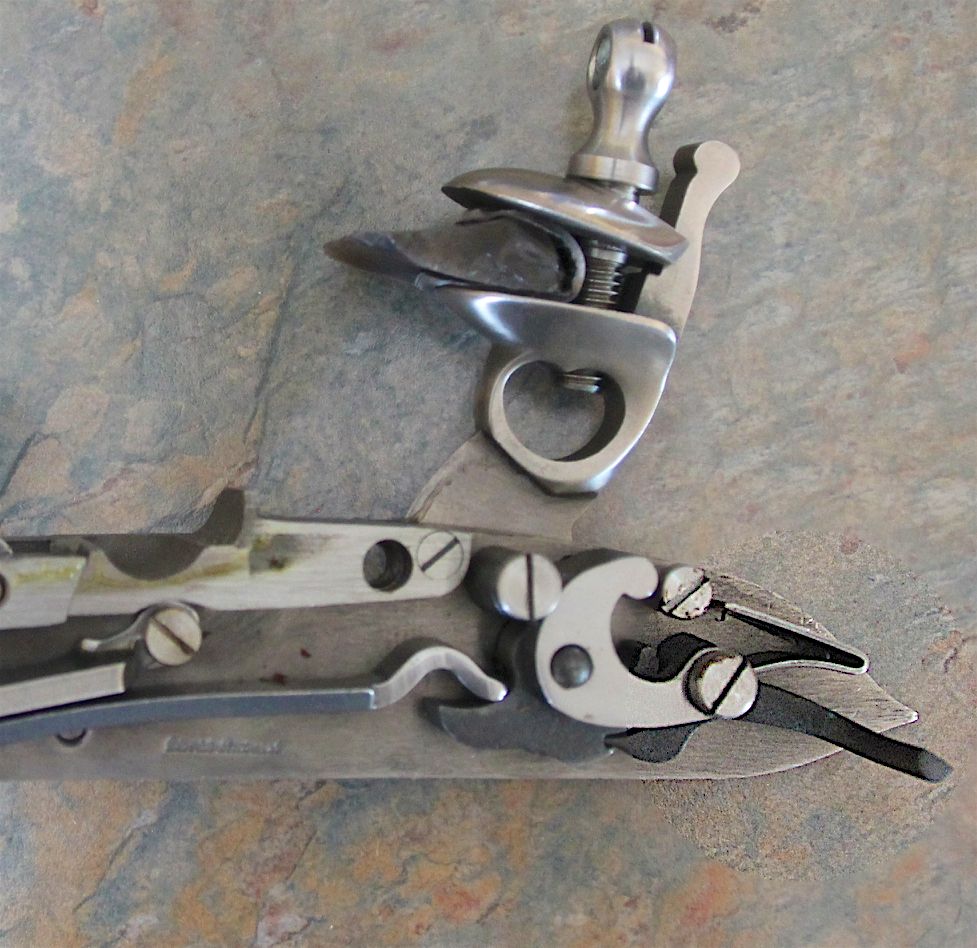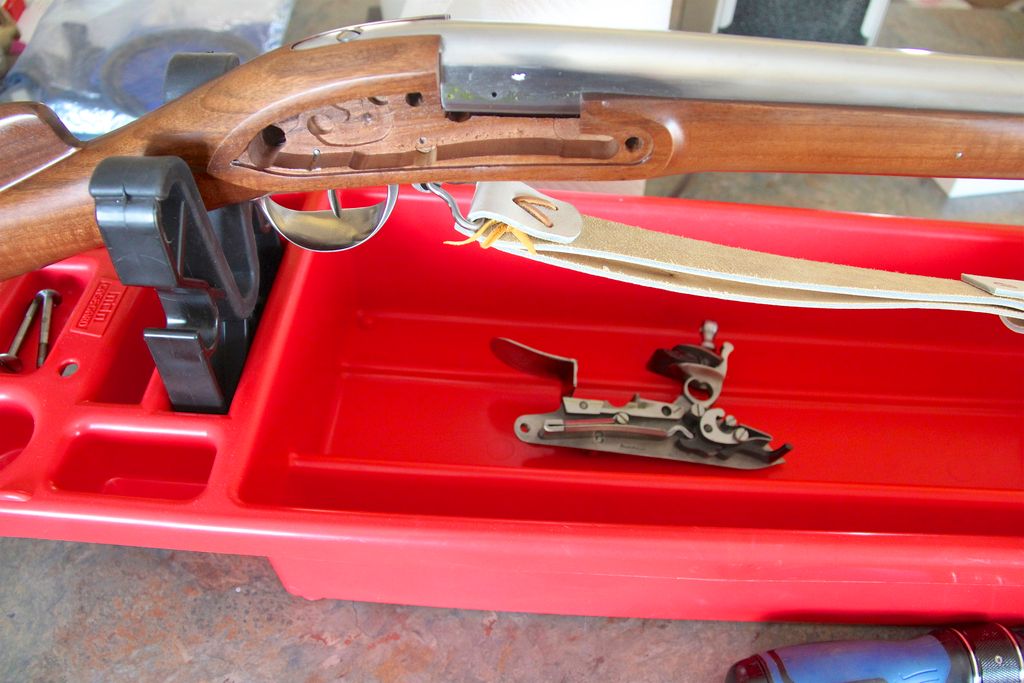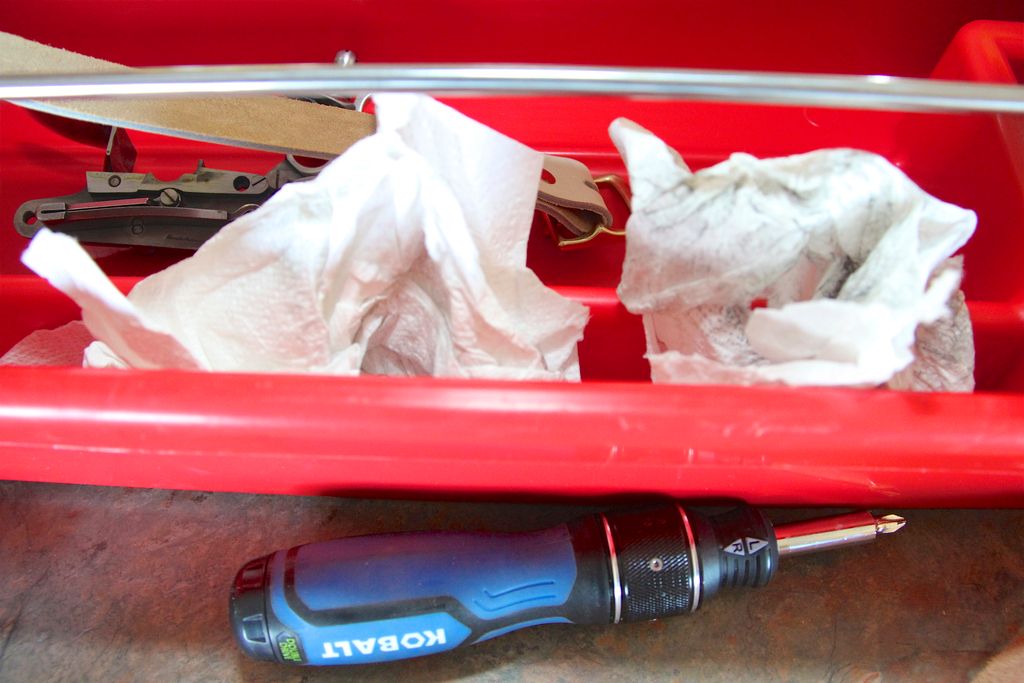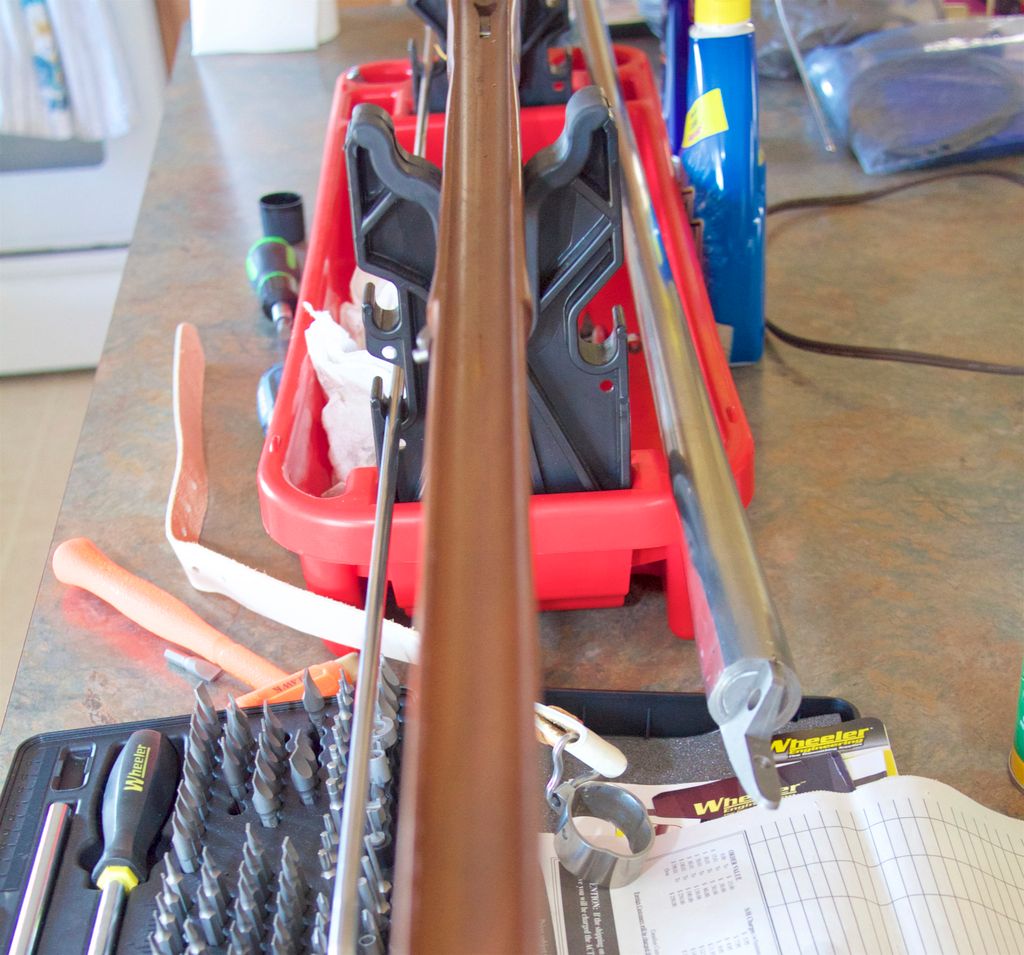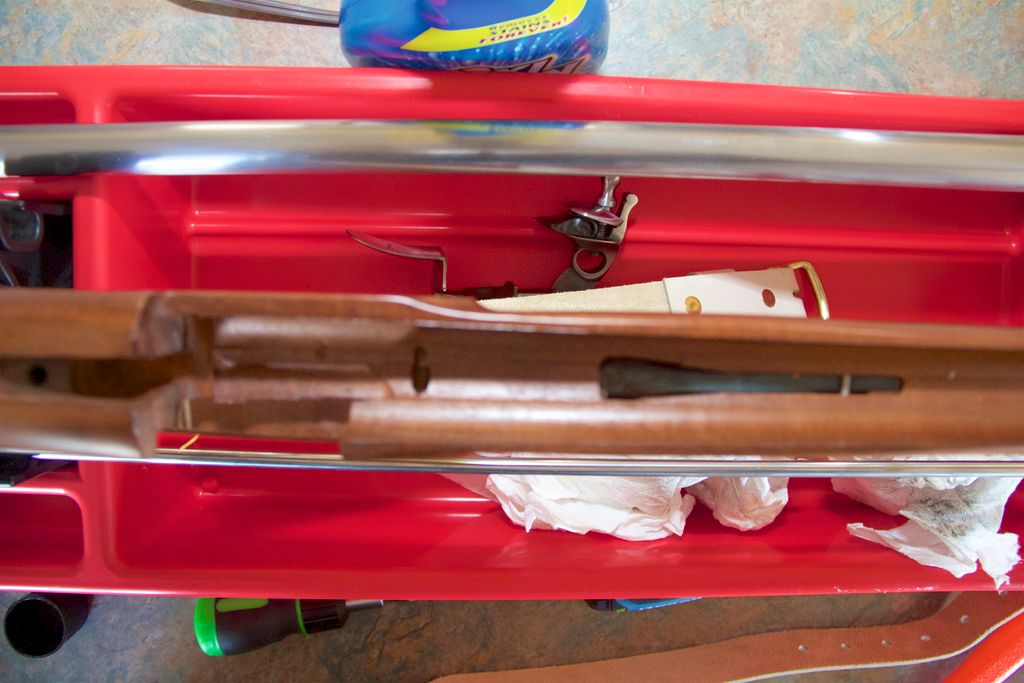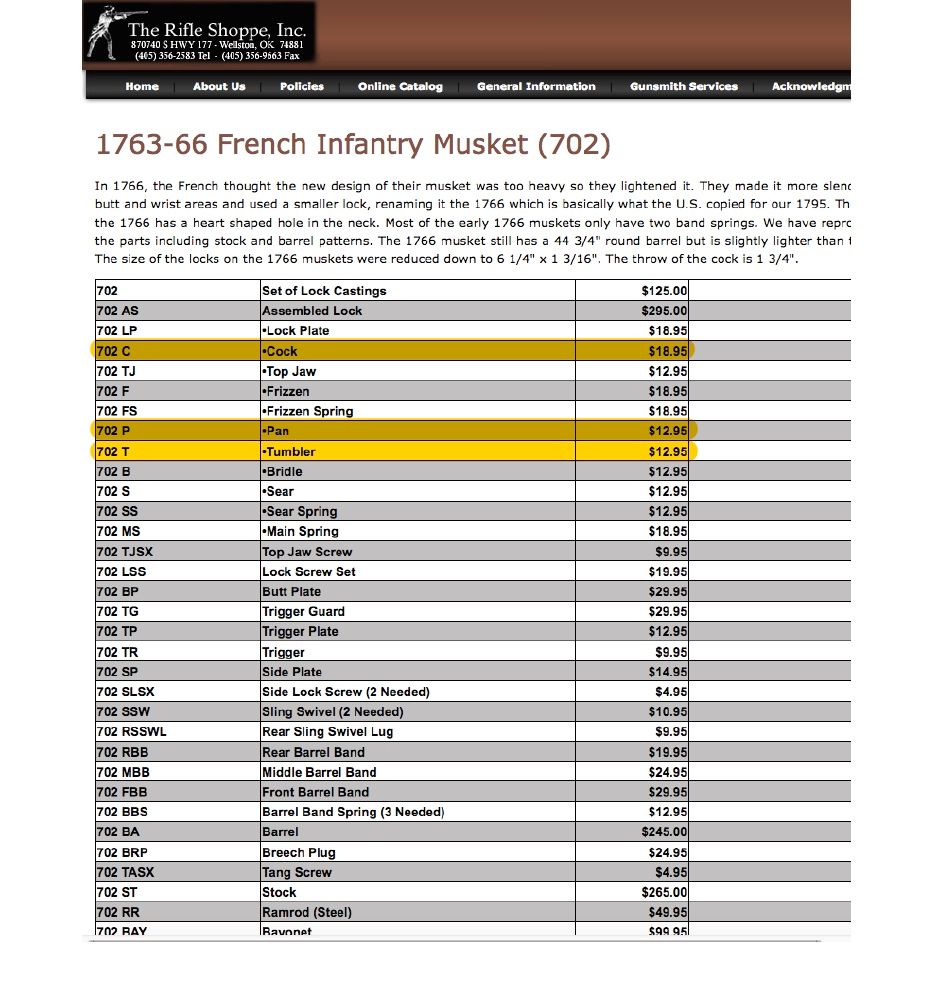Hi,
Unfortunately, the author promotes a few really bad ideas. First, never take lock bolts out and then "wiggle the lock" until it pulls out of the mortice. Instead, unscrew the lock bolts, and then tap the heads lightly to push the lock out of the mortice. That way, it never wears the edges of the mortice. Second, on a Bess, the barrel pins should be tapped from the lock side and reinserted from the sideplate side. No need to mark the stock to identify them because it is easy to see which pins hold the ramrod pipes and those that anchor the barrel. Moreover, grind the barrel pins a little short so they are recessed into the wood on the lock side when inserted. The pin hole will serve as a guide for your punch preventing it from denting the wood when tapping them out. Do not bother drying a lock with air pressure. Simply after washing, spray it with a water dispersant like WD-40 or Ballistol. Don't worry one whit about getting the dispersant on the frizzen. Wipe off as much excess oil as you can. Then put a few drops of gun oil on the internal parts and where the frizzen touches its spring. Wipe down your trigger and barrel with a rag containing a little gun oil and at least once a year, rub the bottom of the barrel with beeswax. Do not use Brasso, which eventually abrades away the surface of the metal. Use a polish like Simachrome. If you wish to see the components of a Pedersoli Brown Bess completely disassembled, use the search function to find my thread "Reworking a Pedersoli Brown Bess"
dave






